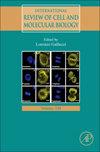原发性和继发性淋巴组织中的趋化因子受体。
3区 生物学
Q1 Biochemistry, Genetics and Molecular Biology
International review of cell and molecular biology
Pub Date : 2024-04-27
DOI:10.1016/bs.ircmb.2023.11.003
引用次数: 0
摘要
趋化因子受体是一种复杂的表面 G 蛋白偶联受体超家族,主要存在于白细胞中。在本章中,我们将回顾趋化因子受体在初级和次级淋巴器官免疫细胞中的存在和功能。这些淋巴器官包括骨髓、胸腺、脾脏、淋巴结和作为肠道相关淋巴组织主要组成部分的佩耶氏斑块。趋化因子受体分为常规和非典型两类。我们将主要介绍传统趋化因子受体的作用,它们分为四类(CC、CXC、CX3C 和 XC)。一些相关的成员包括 CXCR4、CXCR5、CCR4 和 CCR7。例如,CXCR4 是骨髓中的一个关键趋化因子受体,它控制着祖细胞向骨髓的归巢、B 细胞的发育以及长寿命浆细胞向这一主要淋巴器官的归巢。CCR7 和 CCR4 是胸腺中的两个主要角色。CCR7 和 CCR9 控制着胸腺种子祖细胞进入胸腺的交通,而 CCR4 和 CCR7 则是胸腺细胞进入髓质的关键,也是胸腺中枢耐受性的控制者。CXCR4 和 CXCR5 在脾脏中发挥重要作用,引导生殖中心不同区域 B 细胞的成熟和类别转换。在 T 细胞区,CCR7 引导幼稚 T 细胞的分化。CCR7 还控制和引导 T 细胞、B 细胞和树突状细胞进入二级淋巴组织,包括脾脏和淋巴结。随着新技术的出现,高维光谱流式细胞仪或单细胞测序等技术使人们对趋化因子受体网络及其配体有了更全面的了解,并发现了介导未知和被忽视的健康与疾病机制的新相互作用。本文章由计算机程序翻译,如有差异,请以英文原文为准。
Chemokine receptors in primary and secondary lymphoid tissues.
Chemokine receptors are a complex superfamily of surface G protein-coupled receptors present mostly in leukocytes. In this chapter, we review the presence and functions of chemokine receptors in the immune cells of the primary and secondary lymphoid organs. Those include bone marrow, thymus, spleen, lymph nodes, and Peyer's patches as the main components of the gut-associated lymphoid tissue. There are general groups of chemokine receptors: conventional and atypical. We will mostly cover the role of conventional chemokine receptors, which are divided into four classes (CC, CXC, CX3C, and XC). Some relevant members are CXCR4, CXCR5, CCR4 and CCR7. For example, CXCR4 is a key chemokine receptor in the bone marrow controlling from the homing of progenitor cells into the bone marrow, the development of B cells, to the homing of long-lived plasma cells to this primary lymphoid organ. CCR7 and CCR4 are two of the main players in the thymus. CCR7 along with CCR9 control the traffic of thymic seed progenitors into the thymus, while CCR4 and CCR7 are critical for the entry of thymocytes into the medulla and as controllers of the central tolerance in the thymus. CXCR4 and CXCR5 have major roles in the spleen, guiding the maturation and class-switching of B cells in the different areas of the germinal center. In the T-cell zone, CCR7 guides the differentiation of naïve T cells. CCR7 also controls and directs the entry of T cells, B cells, and dendritic cells into secondary lymphoid tissues, including the spleen and lymph nodes. As new technologies emerge, techniques such as high dimensional spectral flow cytometry or single-cell sequencing allow a more comprehensive knowledge of the chemokine receptor network and their ligands, as well as the discovery of new interactions mediating unknown and overlooked mechanisms in health and disease.
求助全文
通过发布文献求助,成功后即可免费获取论文全文。
去求助
来源期刊

International review of cell and molecular biology
BIOCHEMISTRY & MOLECULAR BIOLOGY-CELL BIOLOGY
CiteScore
7.70
自引率
0.00%
发文量
67
审稿时长
>12 weeks
期刊介绍:
International Review of Cell and Molecular Biology presents current advances and comprehensive reviews in cell biology-both plant and animal. Articles address structure and control of gene expression, nucleocytoplasmic interactions, control of cell development and differentiation, and cell transformation and growth. Authored by some of the foremost scientists in the field, each volume provides up-to-date information and directions for future research.
 求助内容:
求助内容: 应助结果提醒方式:
应助结果提醒方式:


